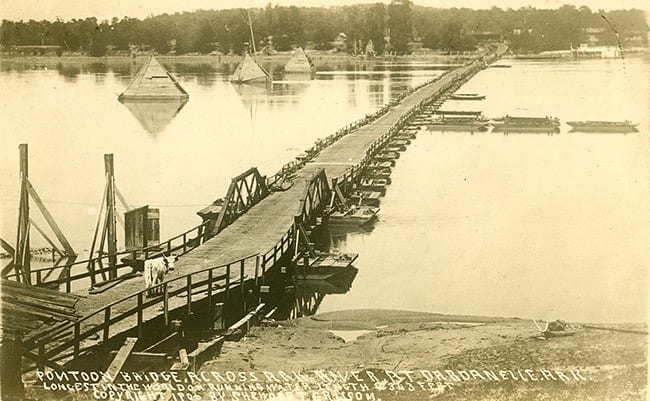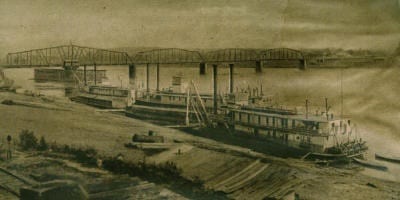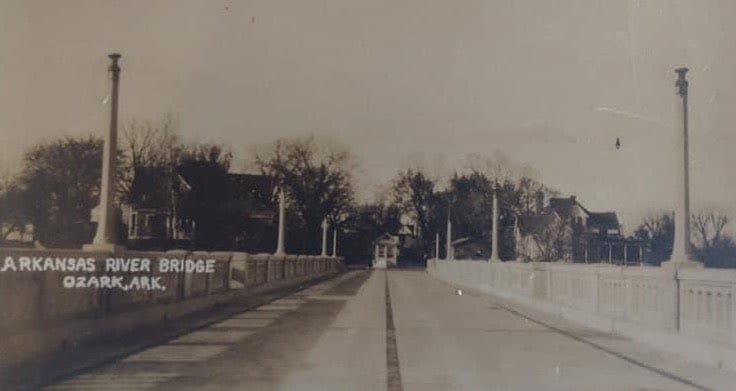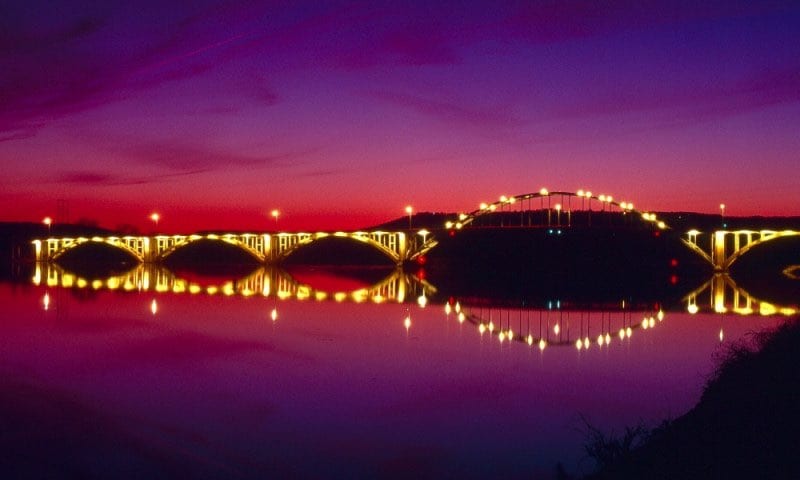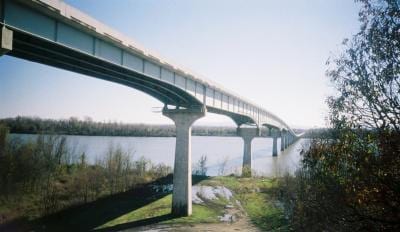By Dr. Curtis Varnell
Up until very recently, travel around and across the state of Arkansas was a difficult task. Roads of the 18th century were nearly impassable; muddy and full of ruts and stumps. Even more difficult was the task of crossing the many streams and creeks that dot the landscape. Arkansas was the land of ferries. Ferries were transport boats that were capable of carrying humans, animals, and wagons across spans of water. Ferries were of special importance in crossing the larger bodies of water like the Arkansas River and they were found at every major town up and down the river.
It’s hard to believe that no bridges crossing the Arkansas River existed until the Baring Cross Bridge was built connecting North Little Rock to Little Rock in 1873. Dardanelle found an interesting solution to the bridge problem when they built the largest pontoon bridge in existence connecting them to the north bank at Russellville. It consisted of a series of seventy-two boats overlaid with wooden planks. It opened for traffic in 1891 and, for the small fee of 5 cents, an individual could walk across the span to the other side. The cost for wagons was 25 cents and, when cars came along, they were charged 50 cents.
When a steamboat needed to pass up or down the river, several of the boats were allowed to swing free providing an opening through which the boat passed. The pontoons were pulled back into place and connected and the bridge was ready again for use. Eventually, it was replaced in the 1920s by a traditional bridge. The bridge linking Memphis to Arkansas was not completed until 1916. Prior to that, automobiles had the choice of a ferry or travel to St. Louis to cross.
As you travel through Fort Smith, you often cross Free Ferry street. It is named appropriately for it once led to the crossing over the Arkansas River to Van Buren. It was replaced in 1886 by the first span that connected the two cities- a steel construction used by the railroads.
Recognized nationally as one of the sixteen most beautiful long-span bridges in America is the bridge at Ozark. Construction on it began in 1929 and it opened a year later as a toll bridge. It took the place of a ferry that had existed going back to Civil War times and was viewed as a great asset opening up trade between areas north and south of the river. As a small child, I can remember when the bridge was upgraded and repaired. When it’s lighted at night, it is one of the most beautiful sights along the river and stands as the symbol for the City of Ozark.
Zipping across the bridge from Morrison Bluff to Clarksville, one little realizes this convenience is one of very recent construction. Up until 1980, one had to travel to Dardanelle or Ozark to cross the Arkansas River to go northward. The span is one of the longest in the state and served to cut travel distance for the people of the river valley.
We take so much for granted. Those bridges that were constructed in our recent past are of so much importance in connecting us to other businesses and our friends in neighboring towns. They are the bridges that will continue to connect us in the future.

